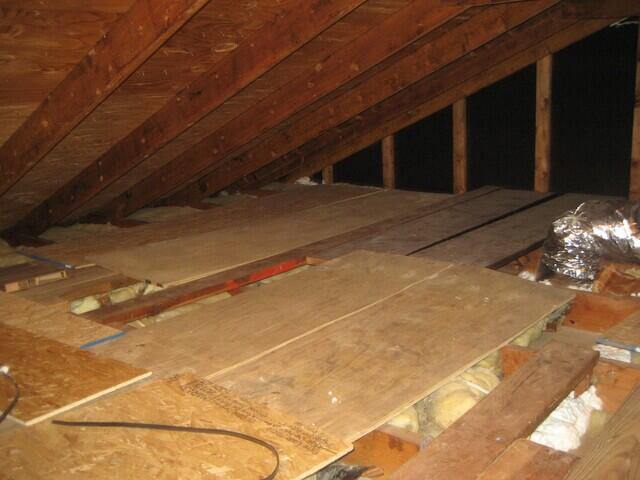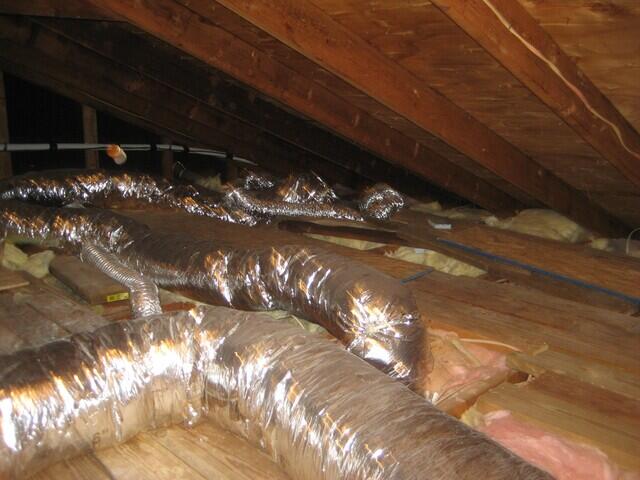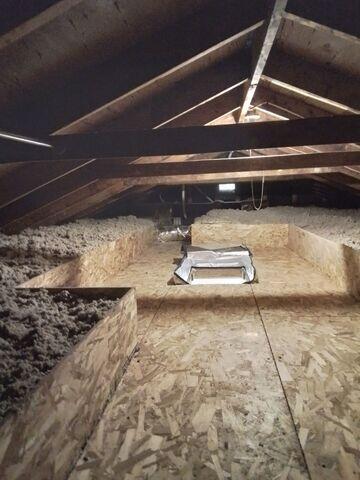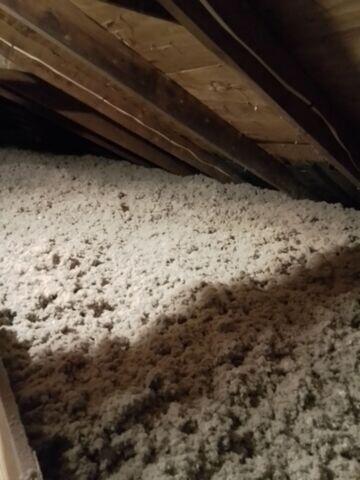
Before: Old Fiberglass Insulation
Old fiberglass insulation distributed unequally across the attic can contribute to warm and cold zones across various areas of the house.

Before: Old Fiberglass Insulation and Air Ducts
Old fiberglass insulation lines the floor of this attic, with air ducts traveling across the floor.

After: Cellulose Insulation & Attic Hatch
Blown-in cellulose insulation is distributed throughout the majority of the attic, with a new, plywood walkway for ease of access. A David Lewis hatch cover, consisting of insulated SilverGlo and a zipper, seals off the attic while still maintaining ease of access.

After: Close-up Blown-in Cellulose
A close up photo depicts the consistency of the blown-in cellulose insulation. The blown-in cellulose insulation is a flame resistant, green product that lines the floor of this attic space.

